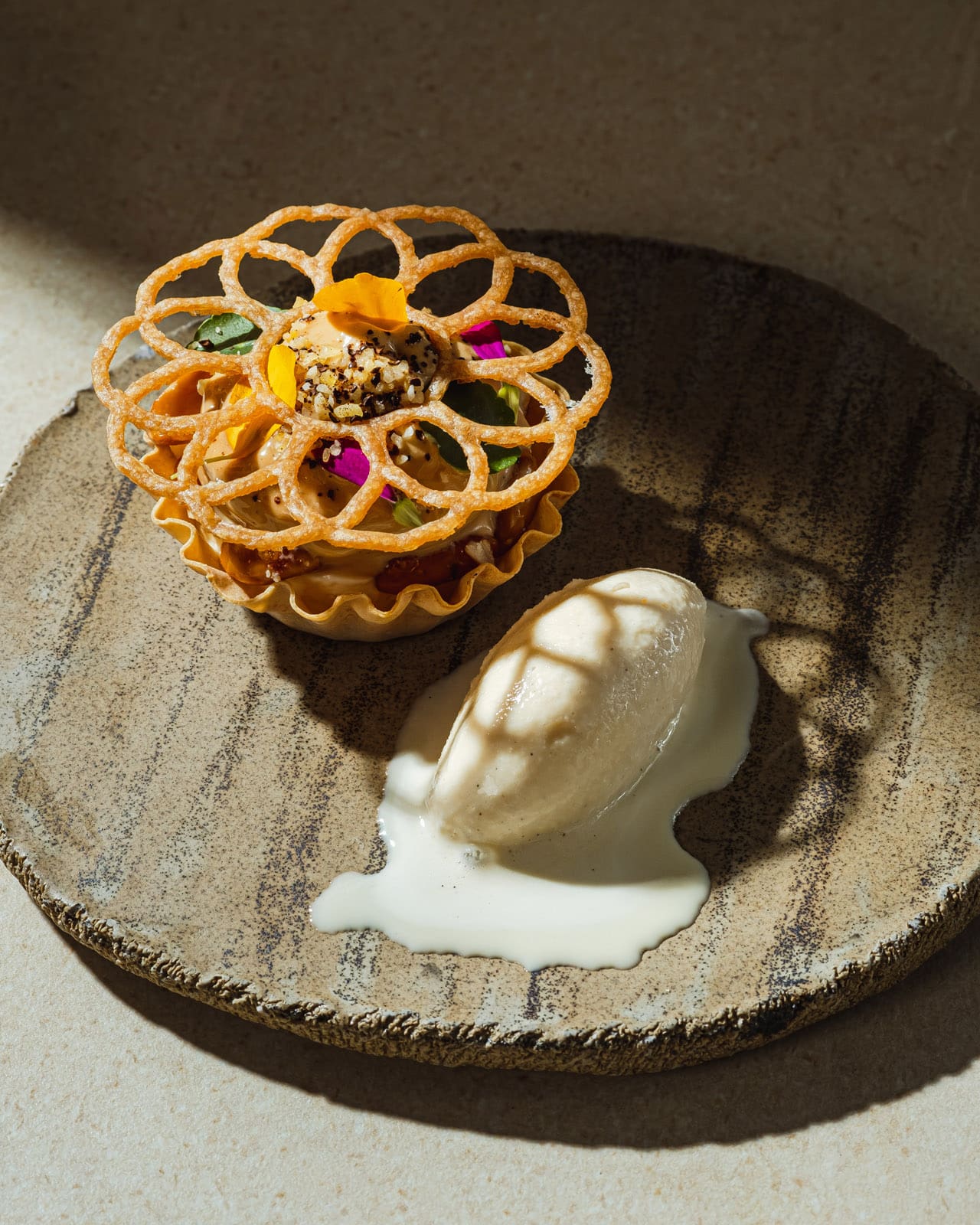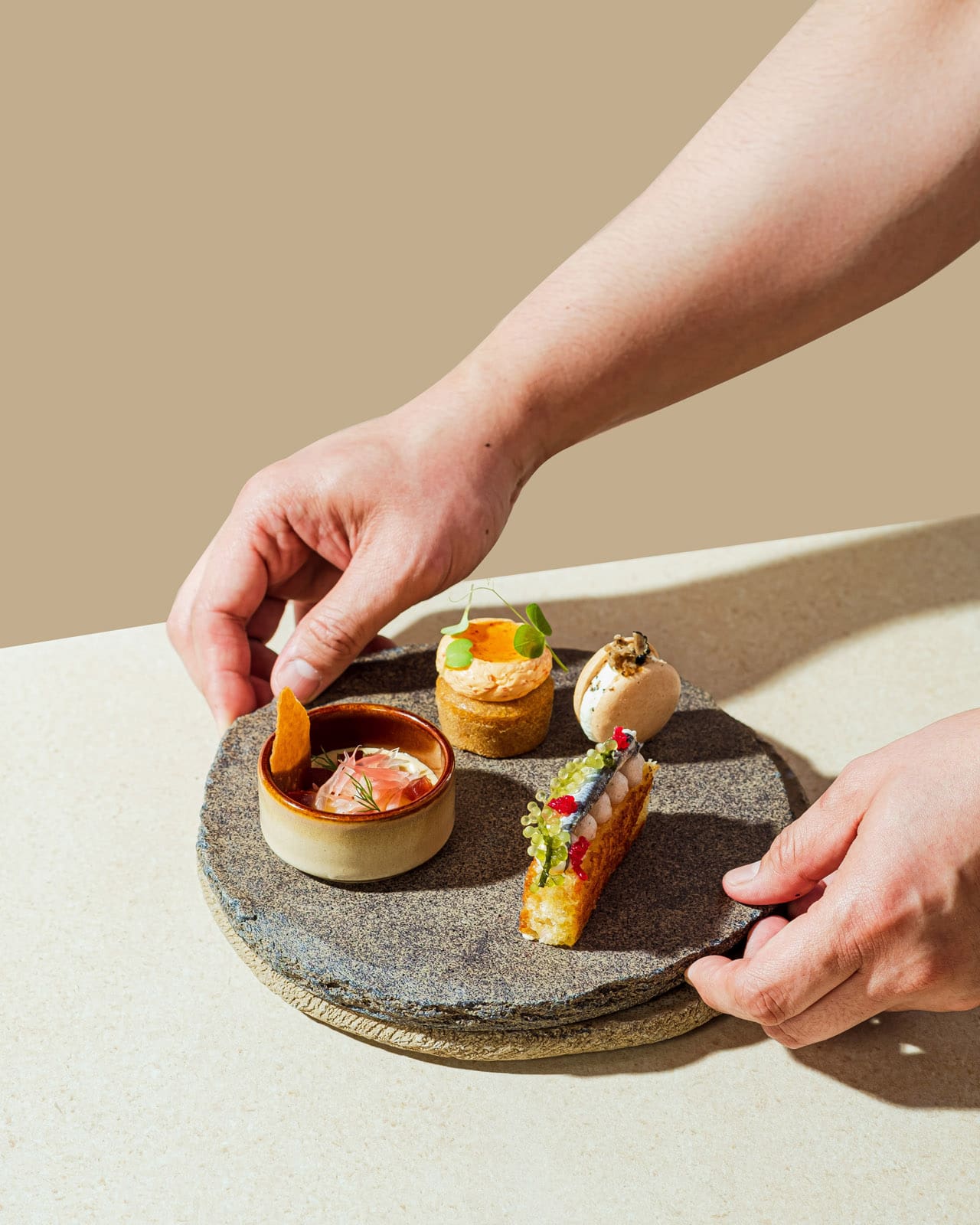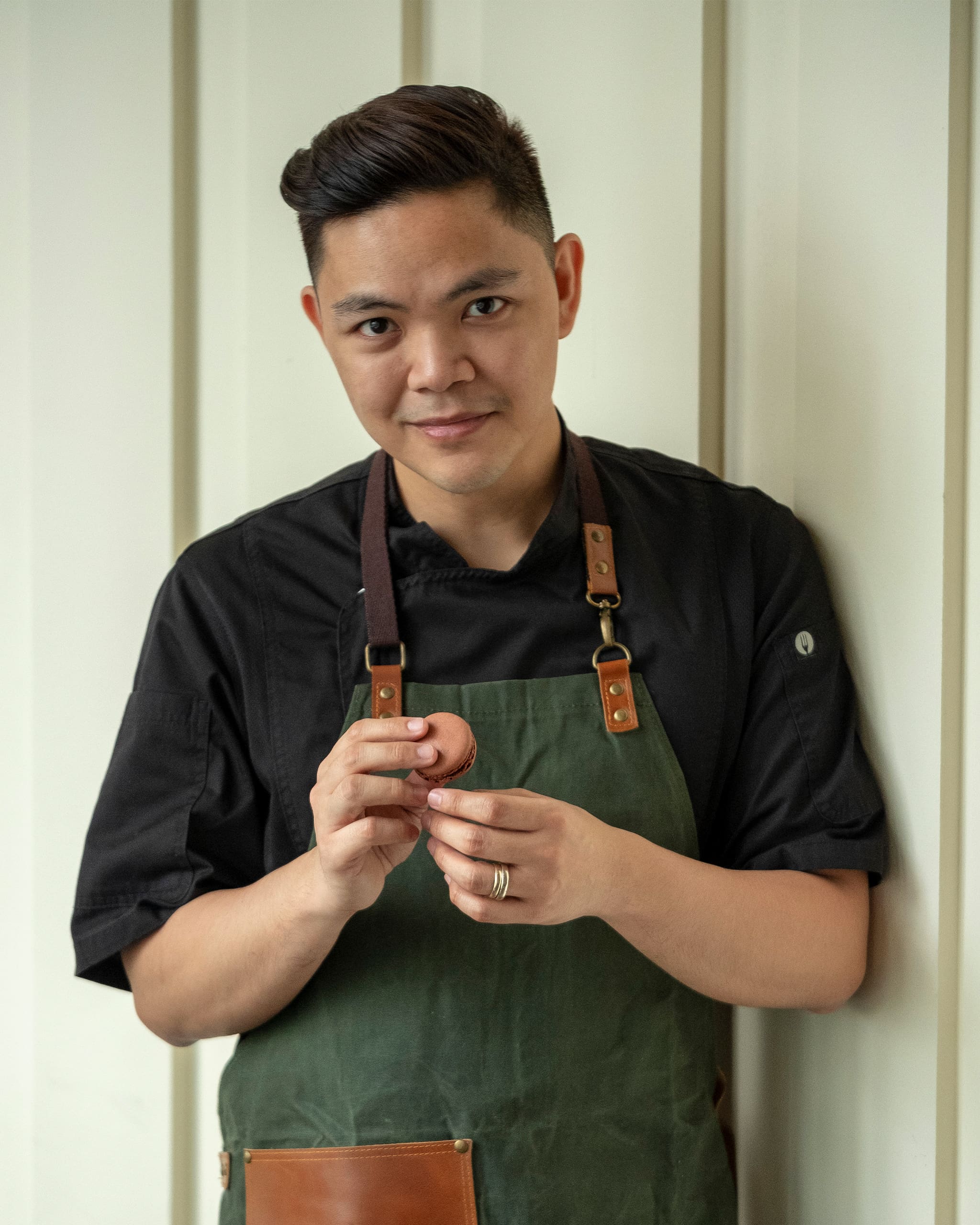Courtesy of Miko Aspiras
The highly-acclaimed pastry chef talks new ventures with Visum and highlighting yet unknown local ingredients
Award-winning pastry chef Miko Aspiras has been known on the food and beverage circuit for quite some time. In 2018, Forbes recognized him along with just four other Filipinos in their 30 Under 30 Asia list for co-owning seven rising restaurant concepts at the time.
After several years of success living and working in Sydney, Aspiras is set to re-enter the local culinary world, having been appointed as the Executive Pastry Chef of Visum Ventures. This is the company behind healthy concepts like Koomi, Oh My Greek, and Zig, to name a few. The partnership between Aspiras and Visum ushers what could be the next generation of desserts in the Philippines.
Vogue Philippines speaks with Miko Aspiras to catch up on his recent ventures and find out where he sees the next generation of local desserts.

A Force To Be Reckoned With
Aspiras was just 11 years old when he started out baking—he’s been a force to be reckoned with ever since. In his twenties, the pastry chef already owned multiple establishments and had worked as the commis chef at Shangri-La Manila.
Of his recent appointment as the executive pastry chef of Visum, he says, “There are going to be a lot of dessert-driven concepts that I’m really excited to start working on, some I’ve already started working on but there are just some more concepts that are blowing my mind right now that I’ll be part of.”


Aspiras also recently collaborated with Chele Gonzales of Gallery By Chele and Sea.food By Chele for his homecoming event. The two had worked together many times in the past, with Aspiras noting that Gonzales had always been very supportive of him. He shares, “He was the one who actually pushed me to do Madrid Fusion … I didn’t wanna do it because I was scared. I was so intimidated by the concept. It really elevated my status.”
From an outsider’s perspective, one wonders how Aspiras is able to keep up with all of his projects. In reality, his key to success is in knowing when to bow out. “I really can’t say that my methods are perfect or that I find a balance because more often than not, I don’t find the balance,” he explains, adding, “In the past three or four years, I learned the power of saying no.”
Home Away From Home
Around five years ago, Aspiras bid adieu to his previous restaurant group and moved to Australia. Contrary to common tales of leaving the motherland to find greener pastures, leaving home was a choice that was very personal to the chef. He says, “I got married to my husband in 2017. We’ve been together for 16 years now.”
Same-sex marriage was legalized in Australia the same year Aspiras and his partner tied the knot. Acceptance and the ability to be together officially [were] a big part of their consideration on whether to move or not. Aspiras explains, “In Australia, being who I am in a same-sex marriage is not a big deal. You’re not treated differently, so that’s what I liked about it.”
One major challenge he’s faced in Australia is a completely different work ethic. Though he arrived with a wealth of awards and accolades under his belt, he felt that he couldn’t apply any of that. It was a fresh start, and there was much to learn.
Despite it being difficult to leave his life here, Aspiras doesn’t regret a thing. He says, “I’m more multi-faceted because of the things that I experienced in Sydney—whether those are good or bad things. They ultimately made me stronger, a better leader.”
A Spotlight On Local Ingredients
Even though Aspiras has been away for several years, the Filipino spirit and love for his homeland never left. In fact, that same spirit is what people are drawn to. He elaborates, “I find that whenever I go back to my heritage that’s when people really appreciate my work.”

These days, Aspiras enjoys finding new ways to highlight local flavors. In the West, Filipino components like calamansi or ube are finding their way into the mainstream like never before. However, the pastry chef shared that there’s one unconventional ingredient that’s caught his attention—cocoa sap juice.
He first heard about the cocoa bean by-product in Samar, thanks to former tourism secretary Berna Romulo who gave him a bottle and urged him to try it, along with other local produce. Valrhona, a chocolate company he works closely with, developed the cocoa sap juice further by fermenting and stabilizing it for commercial use.
Aspiras explains, “Not enough pastry chefs use that ingredient, the cocoa sap juice, because I guess they don’t have much experience with it. But with me, because I’ve had experience with it before, I knew what I could do with it.”
According to him, cocoa sap juice is a healthy, vegan, and gluten-free alternative to anything from barbecue glazes to plum sauce or honey. Normally, anything that isn’t turned into chocolate gets thrown away and wasted. Promoting the product and encouraging other chocolate producers to make use of it could potentially yield another sustainable product and source of revenue for local farmers.
